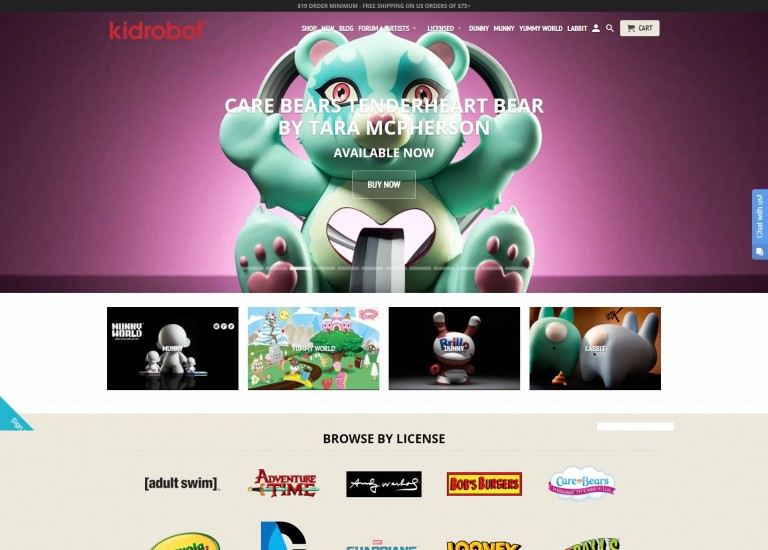By Patrick Foster on May 01, 2017 in Marketing

Running an ecommerce business is exciting, but it’s also a minefield. Knowing what to do and where to invest your money next can be a challenge for newbies and experienced business owners alike. Here are some ecommerce mistakes to avoid if you want to succeed as an online merchant. Steer clear of these faux pas and you’ll be on the right track.
Not building a list: Loss in sales revenue
Don’t lose out on an ecommerce goldmine – your email list. Email is a marketing mainstay – it’s one of the best ways to engage with existing customers.
- Email marketing for ecommerce is all about offering your audience value and building a relationship with them. You can prompt people to finish a sale, pick up a present for a loved one, or submit an online review. You can also ask them how they are doing, what they thought of a recent event, or whether they’d like some freebies (just because). Create a culture of dialogue rather than just ‘pure’ sales.
- People are happy to hand over their contact details – as long as there is an agreement on what those details will be used for. No-one likes to make one purchase and then receive a hyped-up sales email the next day. Focus on sending emails that are about knowledge, shared experiences, and personalized offers – not just boring sales messages.
- You have to be careful about ending up on people’s radar as spam – it could ruin your email stats. List segmentation is one of the key ways you can ensure you’re only sending out relevant messages to relevant people.
- Learn how to develop a genuine brand voice – right down to your email subject line and footer. Stand out in people’s inboxes with fresh and meaningful messages.
- Order confirmation emails, triggered cart abandonment emails – automate these processes to take the pressure off the sales team. Design beautiful and compelling personalized emails with a clear call to action – just because it’s automated doesn’t mean it has to be robotic.
Not investing in design & development: Poor user experience
Speed, performance, agility. These are just some of the basics of a great ecommerce environment.
- Good ecommerce web design is seamless customer experience built on a solid technical platform. Make sure that your store doesn’t have any technical issues like 404s or bad mobile usability – technical glitches can massively impact your conversion rates.
- Look for ecommerce design inspiration around you. What websites perform well, and why? Try to emulate successful ecommerce designs and add your own twist to them.
- Balance great design and branding with product organization and simplicity. You need to focus on performance, not just aesthetics.
- Design doesn’t end at your store – product packaging plays a big part in how people perceive you, and may impact whether they buy from you again. The best packaging tells a story – check out these awesome, creative designs that create a unique unboxing experience.
Forgetting to invest in security: Compromising trust
Ecommerce and sales are all about trust. Keep your customers’ data safe by investing in website security, and make them feel confident when buying from you.
- Make sure your web environment is as up to date as possible (including external plugins and apps), and maintain your site’s environment on a regular basis. Factor in regular maintenance into your digital costs and don’t skimp on security updates. (A secure and up to date website will also perform better).
- Store customer data securely. Especially if you are working from home or from your own laptop, be clear on how you should deal with confidential customer data.
- Encourage shoppers to choose secure passwords – don’t scare them off by talking about hacking when they’re paying for your product, but use a password strength calculator to encourage them to do better. Losing customer data through password hacking is a PR nightmare.
- Be clear about how your site takes payments. Build consumer trust with secure connections and widely used payment gateways.
Jumping on every bandwagon: Negative brand image
Always jumping on the latest trend and joining the ‘cool’ social media kids before you know what you’re doing can make your brand look desperate. Just because something is ‘emerging’, doesn’t mean it’s right for you! Stick to what makes sense for your products and your customers.
- Consider carefully where your customers are on social and what they care about, instead of what your marketing team might find exciting to trial. It’s totally OK to explore new avenues, but don’t go chasing after every new shiny toy. Too much diversification will financially cripple you, and divert attention away from core activities like customer experience. A failed launch onto a social media platform is a form of negative PR you’ll want to avoid.
- The best social media engagement comes from a genuine place of mutual appreciation. Instead of focusing on how you can look cool – make your customers look cool instead. Your brand exists because of (and for) them.
Forgetting to factor in support: Unfulfilling customer experience
Customer service shouldn’t just stop (or start) at the sale – many people need plenty of support after (and even before) a sale is made.
- Not having a good customer support chat BEFORE a sale can be dangerous. If a sales team if purely focused on closing a deal, not finding the right product or explaining it to the customer; you run the risk of having unhappy customers.
- You need a good customer service team who can bridge the knowledge gap so that new customers can get the most out of your products and services. Whether your customer service is mainly email, phone or live chat based – make sure the right people are on the frontline to provide the right kind of support. They’ll need patience, understanding, and bags of politeness. Bad support or aftercare can be very damaging for a brand.
- A supportive and non-pushy sales journey focused on support means that customers will feel more empowered about the product choices they make.
Biting off more than you can chew: Misguided investment
It can be easy to get carried away at first – but be cautious with your ecommerce investment. It might take you a few dry runs to find the right product or niche for you – don’t rush into something that isn’t going to work for you in the long term.
- Don’t buy in too much stock before you are confident in your ability to sell it all. Liquidizing stock is expensive (in some niches it’s nigh impossible); and it’s also extremely demoralizing. Start slow and dropship or so small product runs to kick things off.
- Complex web environments are big investments. Only once you’re confident you’ve got the right niche and the right product should you charge ahead. Before you go and throw all your money into a complex design, experiment with marketplace and social selling first. (Integrations like the Shopify/Amazon one mean that you can easily transfer products to your online store).
- When speaking to external investors, be mindful about giving away too much of your company too soon. Approach investment and growth with caution and consider outsourcing, virtual teams and software solutions before diving into a rental contract and expensive staffing costs.
Don’t be afraid to take the big ecommerce leap – see mistakes as learning opportunities and don’t get disheartened even if you don’t get things right away. Stay true to your brand and your journey, and don’t forget to use the community around you for knowledge, insight, and understanding. What ecommerce mistake do you think is the most dangerous one a business can make?












